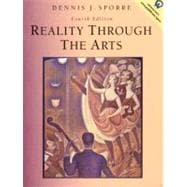Designed for those who have limited experience in the arts, the text is divided into two parts: "The Media of the Arts: What Artists Use to Express 'Realty'" and "The Styles of the Arts: How Artists Portray 'Reality.'" Part One examines the media of the arts by defining and explaining important terminology, discussing how works are composed, and suggesting ways in which art effects responses in viewers and listeners. Arranged chronologically, Part Two samples art from a variety of cultures, focusing on style as a reflection of expression and meaning.
Among the new features in this edition are:
- "Getting Started." Introductions to each of the two main sections of the book to help students understand the material ahead.
- Chapter Outlines and Important Terms beginning each chapter.
- "Profiles." A series of feature boxes throughout, introducing an artist of note in fuller biographical detail than is possible in the main text.
- "Masterworks." Another series of feature boxes, appearing in Part Two, drawing attention to significant works of art, architecture, and literature.
This edition also includes specific music illustrations for both the descriptive materials in Part One and the stylistic materials in Part Two. These examples in the music sections are accessible on the correlating compact disc available from Prentice Hall.








